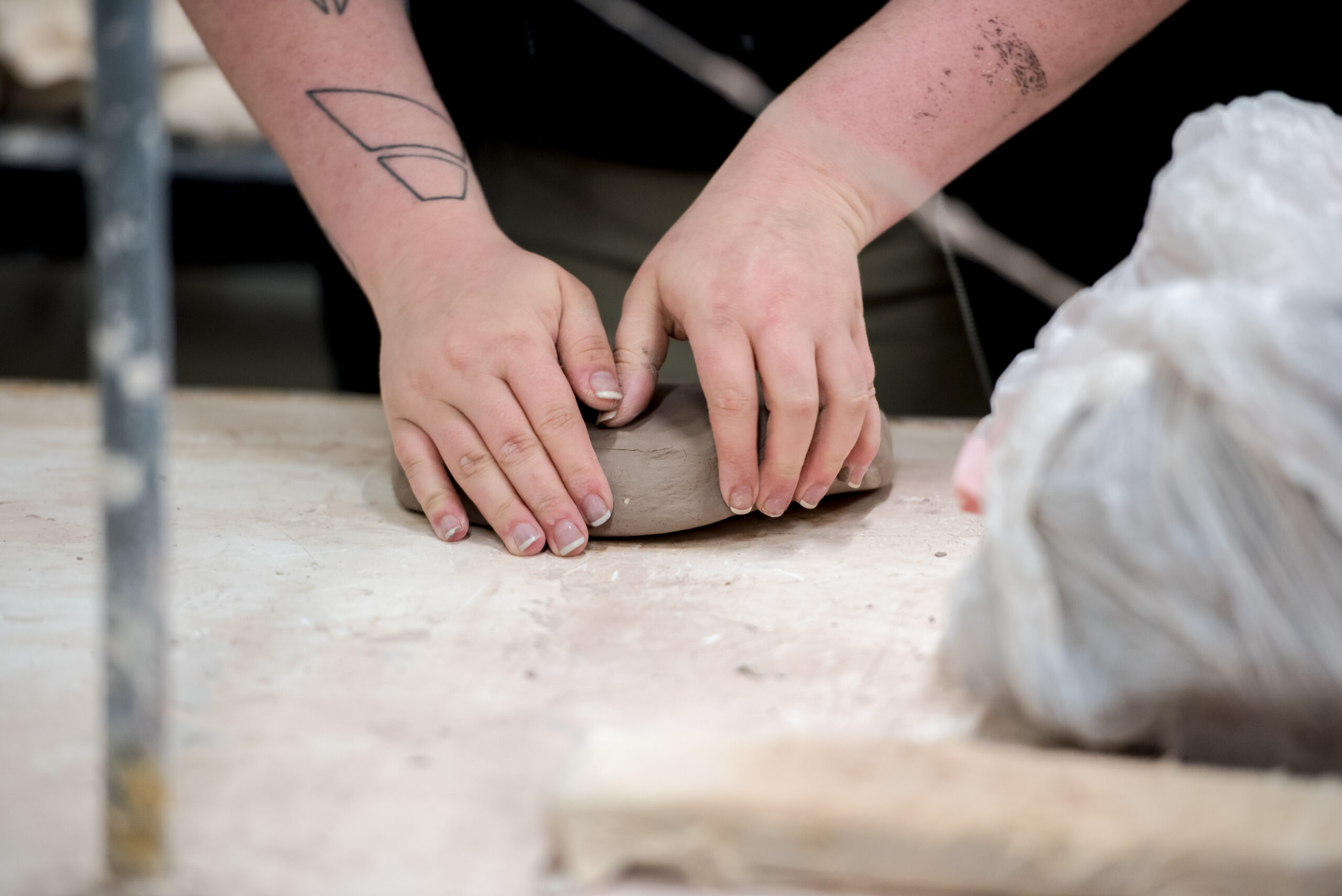Art Therapy


Why Pursue Art Therapy?
Art therapists use the creative process to help heal a wide range of mental health concerns. Art therapists build trust in their patients by employing the creative process of various artistic disciplines. Ultimately, this approach enables clients to find the confidence, hope, and courage to face life’s problems. Most art therapy positions require an advanced degree; therefore, Piedmont University’s bachelor’s art therapy program will prepare you for entry into graduate counseling programs and get you started on a successful career.
Art therapy combines two disciplines – art and psychology – often to wonderful therapeutic results. Therefore, at Piedmont, we focus heavily on both aspects of this pursuit. You will do so in a supportive environment set in inspiring facilities and led by dedicated faculty. Delving into these two studies will also provide you with a platform for success in a wide assortment of fields, including counseling, mental health care, teaching, and work in the wider art community.

How a Piedmont Art Therapy Degree Helps You
The benefits of a Piedmont Art Therapy degree are plentiful:
- Learn about mental health, as well as gain a basic understanding in counseling through psychology classwork.
- Gain real world experience through our required human services internship.
- Grow in and improve your own artistic expression.
- Learn more about art and what it does to the human brain and experience.
Career Opportunities
While most jobs in art therapy require a master’s degree in art therapy or counseling, Piedmont students with a bachelor’s in art therapy have gone on to successful careers in:
A degree in art therapy can enhance your role in education by providing tools to support students' emotional and mental well-being through creative expression. It also helps you address behavioral and learning challenges more effectively, fostering a more inclusive and supportive classroom environment.
A degree in art therapy helps in health organizations by equipping you to provide therapeutic support to patients through creative expression, aiding in emotional healing and mental health treatment. It also enables you to collaborate with healthcare teams to design holistic care plans that address both psychological and physical well-being.
A degree in art therapy enhances your work in counseling by providing creative techniques to help clients express emotions that may be difficult to verbalize. It also equips you with therapeutic skills to address mental health challenges through both talk therapy and art-based interventions, making sessions more engaging and effective.
A degree in art therapy helps in psychiatric institutions by providing specialized skills to use art as a therapeutic tool for patients coping with severe mental health conditions. It also allows you to work collaboratively with psychiatrists and other mental health professionals to support diagnosis, treatment, and emotional expression in a safe, structured environment.
More About Art Therapy
Learn more about Art Therapy and the variety of options available to you as a Piedmont student.
Because practicing art therapy requires an advanced degree, Piedmont University’s experienced and caring faculty have crafted a study pathway that perfectly prepares you for graduate level pursuits. However, what you learn in our undergraduate art therapy classes will also build a level of knowledge that can suit other pursuits beyond professional counseling. Our art therapy undergraduate program includes 45 hours of psychology and art classes.
Your instruction and training will encompass all aspects of art therapy – including art foundations, art history, and psychology. Your psychology classes build empathy for others and give you a practical grounding in the pursuit of counseling. Meanwhile, your art courses will help you to better understand the history of art and how it has shaped our world. You will also build a personal visual voice as you will have the opportunity to build skills in ceramics, digital fabrication, drawing, graphic design, painting, photography, printmaking, and sculpture.
You will learn inside Piedmont’s Smith Williams Art Studios, which houses dedicated spaces in ceramics, drawing, digital fabrication, graphic design, painting, photography, printmaking, and sculpture. The Mason-Scharfenstein Museum of Art also houses a permanent collection and holds exhibitions bringing artists from around the world to Piedmont University.
While a strong academic foundation is certainly necessary, Piedmont prides itself on fostering social and communal relationships on campus. Thanks to small class sizes, dedicated and personable faculty, and Division III athletics, our students develop a family community while pursuing their careers as art therapists. And, upon reaching graduation, our career services department will ensure that each and every student is on the path towards furthering their studies or employment.
Related Programs
Intrigued by art therapy? You might also be interested in one of these programs:



Where do I start?
To begin your journey toward earning an art therapy degree at Piedmont University, you can start by applying today! Or, schedule a campus visit and meet with admissions and financial aid advisors, as well as faculty members in arts and health sciences.



